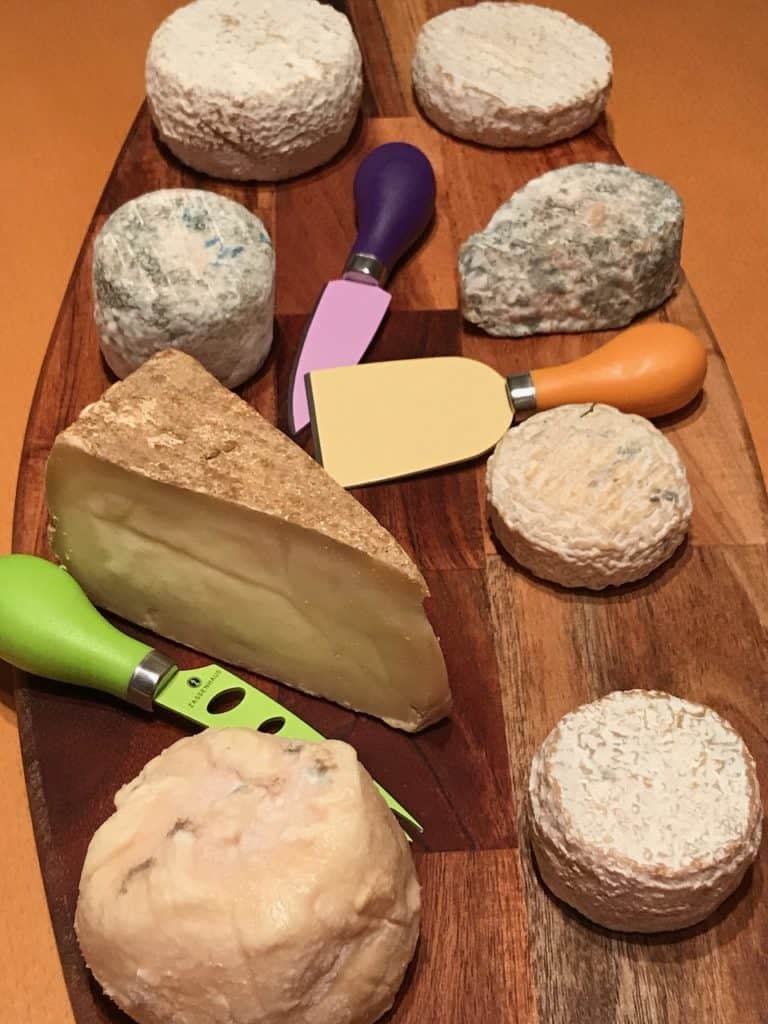
I have checked out AI – Artificial Intelligence – and asked what the future prospects of raw milk cheese might be. Not gloomy at all, but there is the issue of defending the definition of cheese or milk rather, irrespective if it’s raw or pasteurised. So here is what AI came up with, based on my questions.
How will the future for raw milk cheese develop?
It is difficult to predict the exact future developments for raw milk cheese. However, raw milk cheese has a long history and has gained popularity in recent years due to its unique flavor and perceived health benefits. Some people believe that raw milk cheese is more flavourful and nutritionally superior to pasteurised milk cheese.
Raw milk cheese is also considered to be a traditional food in many cultures, and there is a growing interest in traditional and artisanal foods. This trend may continue, leading to an increase in the production and consumption of raw milk cheese.
On the other hand, raw milk cheese can pose certain risks to human health if not produced and handled properly. There have been outbreaks of foodborne illness associated with the consumption of raw milk and raw milk cheese. This may lead to increased regulation of the production and sale of raw milk cheese in the future.
Overall, it is likely that the future for raw milk cheese will be shaped by a combination of factors, including consumer demand, traditional food movements, and food safety concerns.
Is there any cheese emerging markets?
There are several emerging markets for raw milk cheese around the world. In recent years, there has been a growing demand for specialty and artisanal cheeses, particularly in developed countries. This trend has led to the development of new and innovative types of cheese, as well as an increase in the production and consumption of traditional and regional cheeses.
There is also a growing demand for cheese in developing countries, as incomes and urbanisation levels rise. In these markets, cheese consumption is still relatively low, but there is potential for growth as consumer preferences change.
Some examples of emerging markets for cheese include:
- Asia: The cheese market in Asia is still relatively small, but it is growing rapidly. There is a growing demand for imported cheese, as well as a growing interest in domestic production.
- Latin America: Cheese consumption in Latin America has increased in recent years, and there is a growing demand for specialty and artisanal cheeses.
- Eastern Europe: Cheese consumption in Eastern Europe has increased in recent years, and there is a growing demand for imported cheese.
Overall, the cheese market is expected to continue to grow in the coming years, driven by changes in consumer preferences and the increasing demand for specialty and artisanal cheeses.
What type of raw milk cheese will grow the most?
It is difficult to predict which specific types of raw milk cheese will experience the most growth in the future, as this will depend on a variety of factors such as consumer preferences, trends in the food industry, and the economic and political environment.
That being said, some types of cheese that may experience growth in the coming years include:
- Artisanal and specialty cheeses: There has been a growing trend towards artisanal and specialty foods in recent years, and this trend is expected to continue. Consumers are willing to pay a premium for high-quality, unique, and authentic products, and this may lead to growth in the production and consumption of artisanal and specialty cheeses.
- Plant-based and alternative cheeses: There is a growing demand for plant-based and alternative products, including plant-based cheeses. As more people adopt vegetarian and vegan diets, or seek out alternative protein sources, the demand for plant-based and alternative cheeses may increase.
- Traditional and regional cheeses: There is also a growing interest in traditional and regional foods, and this trend may lead to an increase in the production and consumption of traditional and regional cheeses. These types of cheeses often have a strong connection to a specific culture or region, and they can be seen as a way to preserve food traditions and support local communities.
What about milk types for making cheese, are there any specific trends?
There are several trends related to the types of milk used for making cheese. One trend is the increasing demand for plant-based and alternative milks, such as soy, almond, and oat milk. As more people adopt vegetarian and vegan diets, or seek out alternative protein sources, the demand for plant-based and alternative milks may increase. Some companies are using these types of milk to make plant-based and alternative cheeses.
Another trend is the growing interest in traditional and regional foods, including traditional and regional raw milk cheeses. These types of cheeses are often made using milk from specific breeds of cows, goats, or sheep that are well-suited to the local climate and environment. There is a growing demand for these types of cheeses, as they are often seen as more authentic and unique.
Finally, there is a trend towards using milk from grass-fed and pasture-raised animals to make cheese. Some people believe that milk from these animals is more flavourful and nutritionally superior to milk from grain-fed animals. This trend may lead to an increase in the production of cheese made from grass-fed and pasture raised milk.
